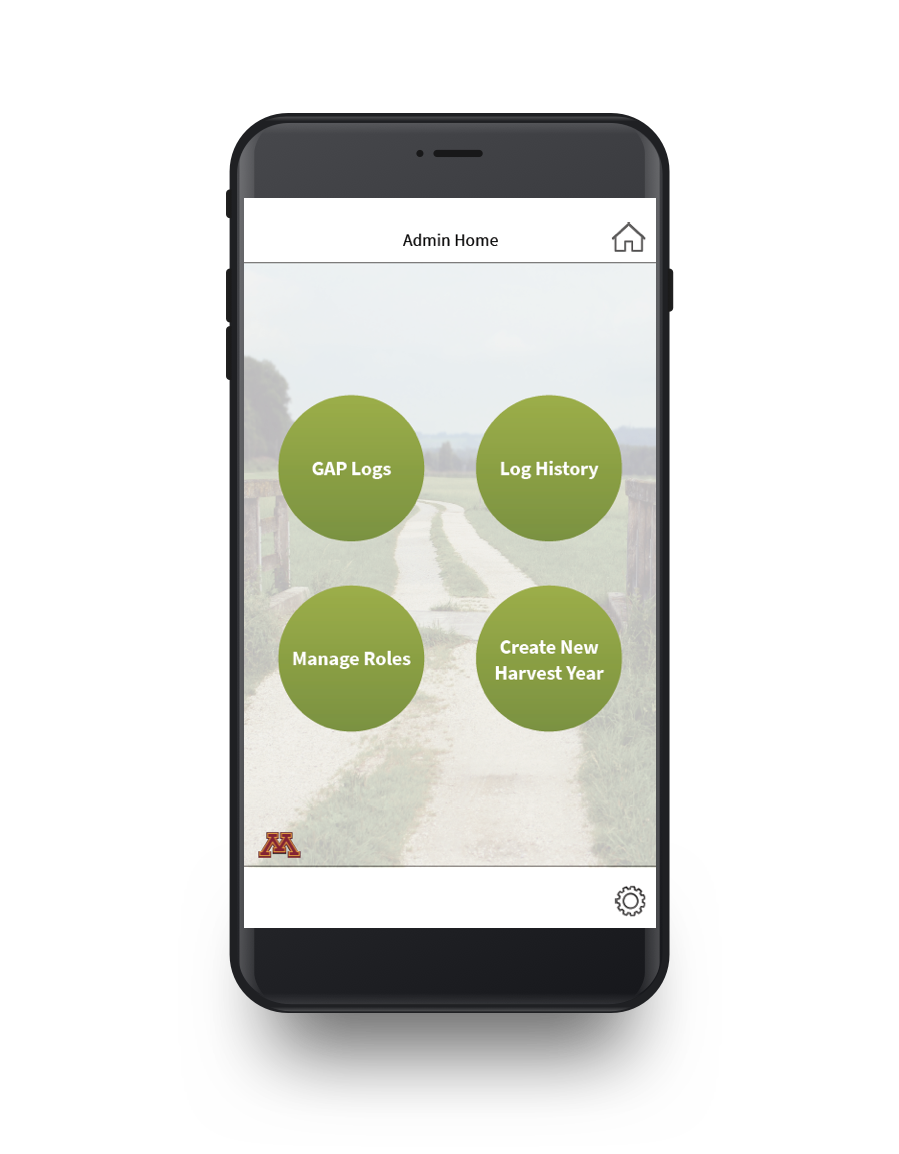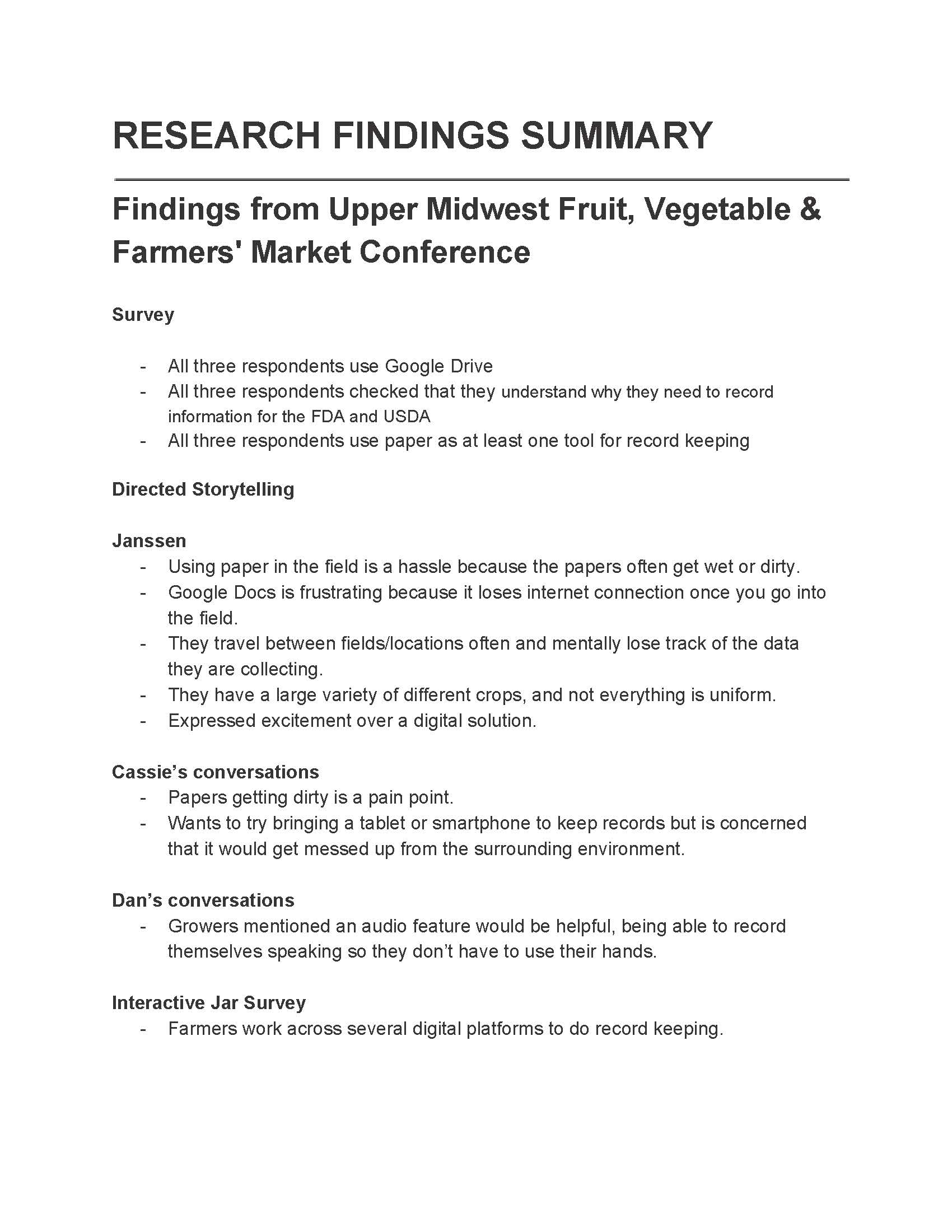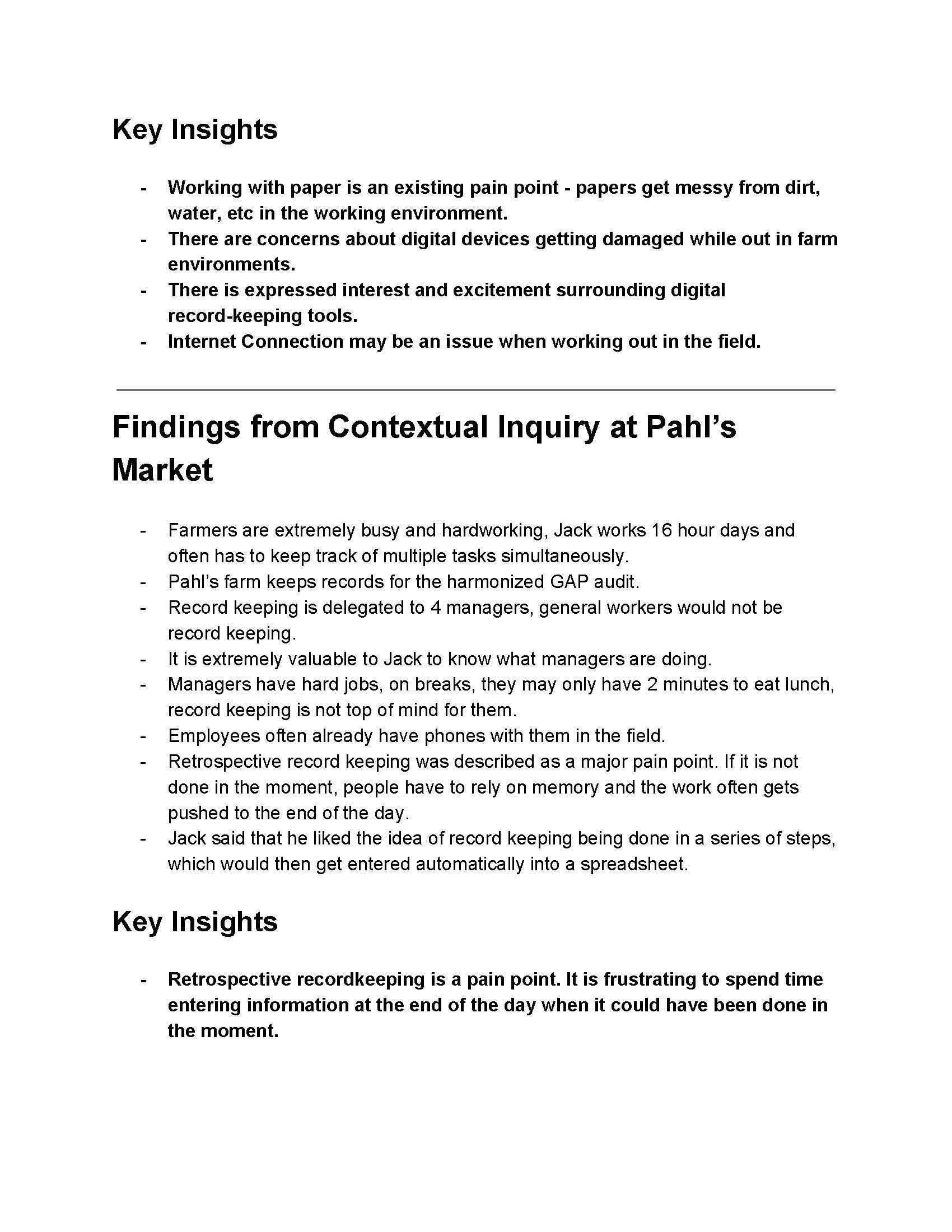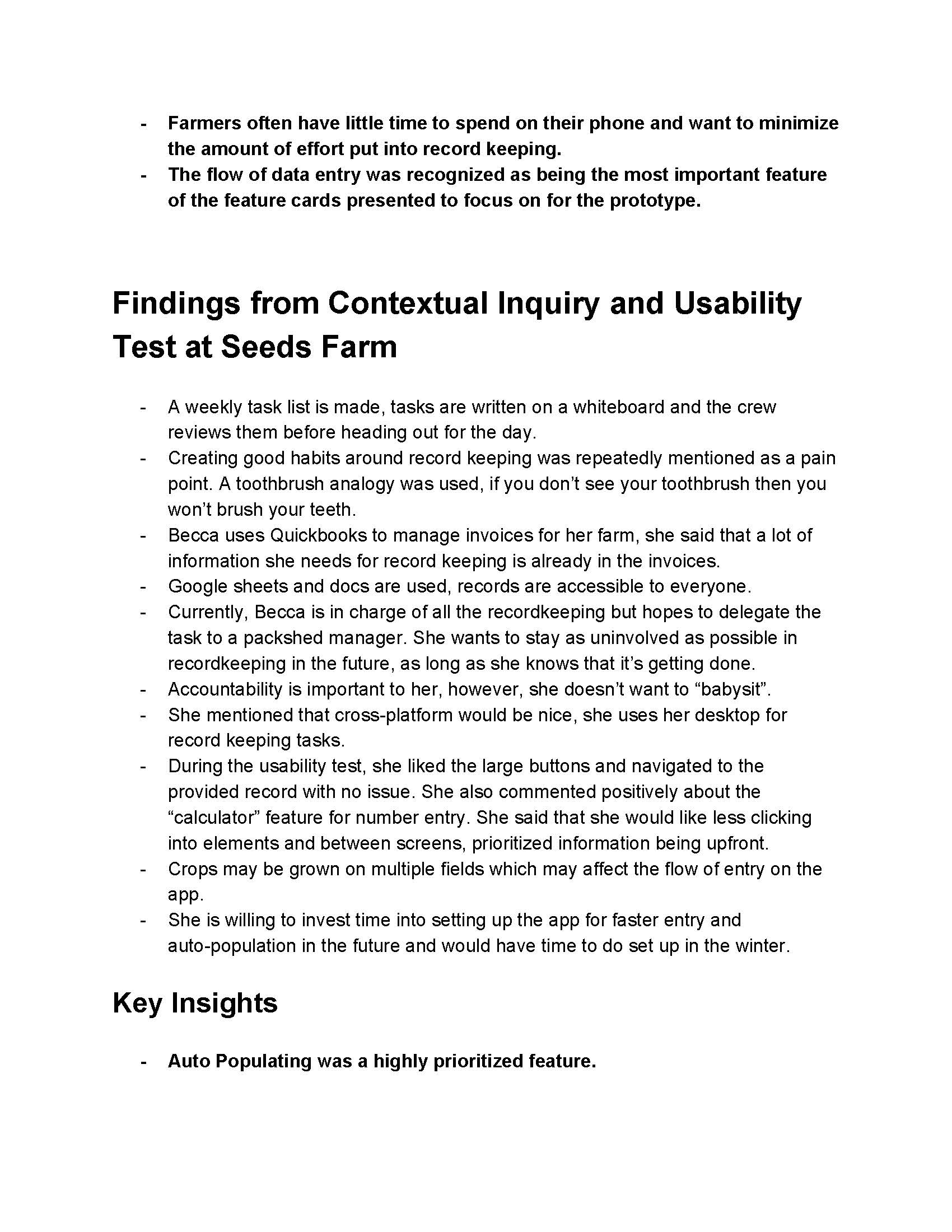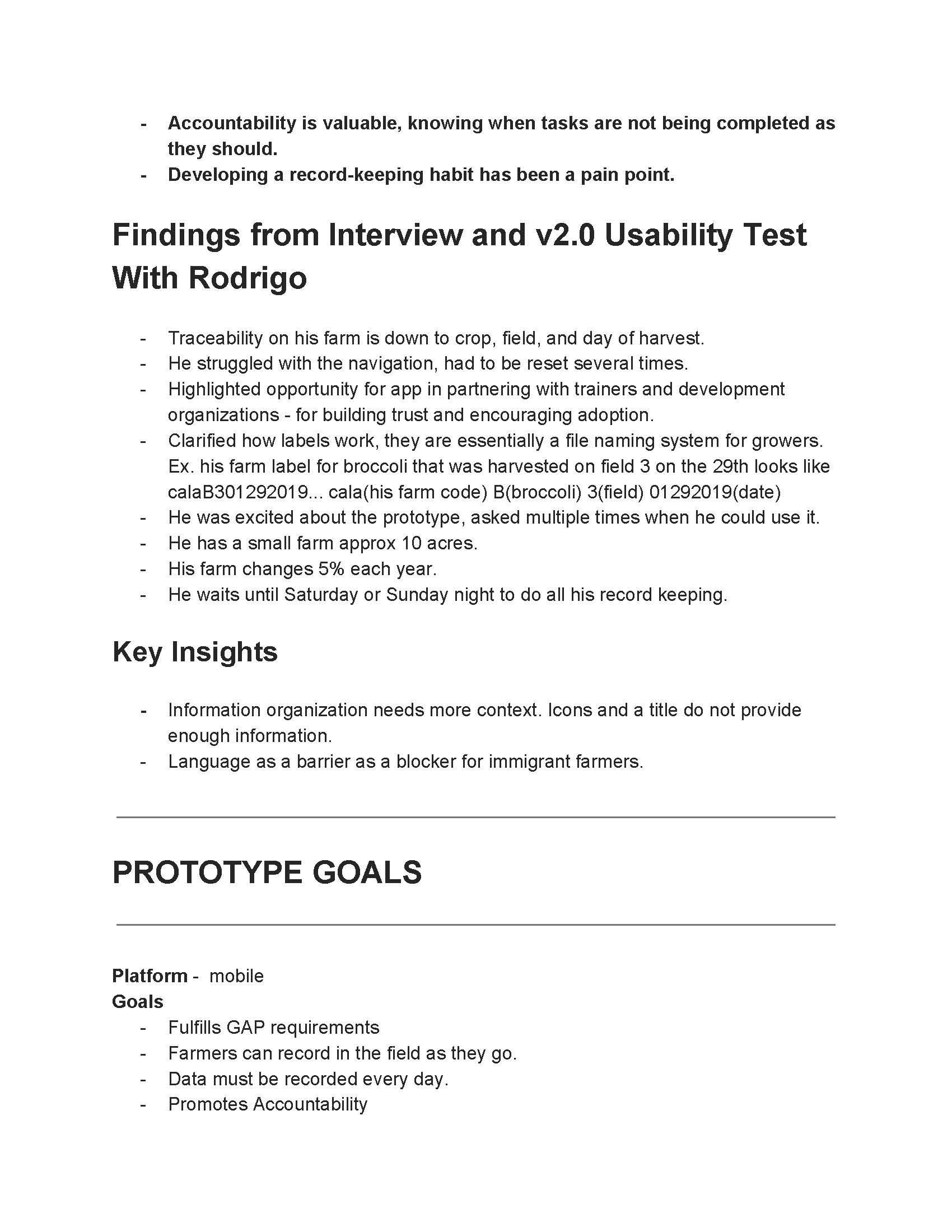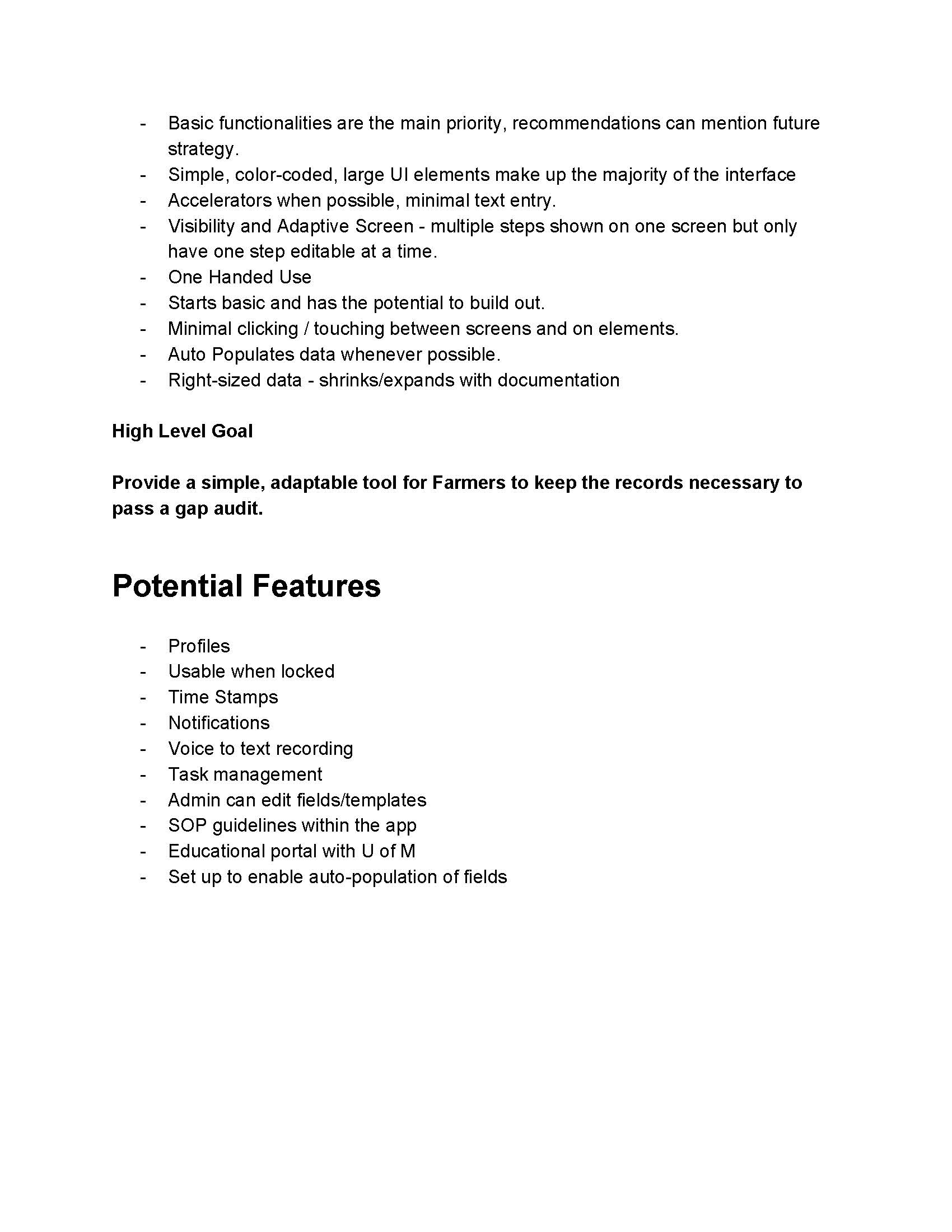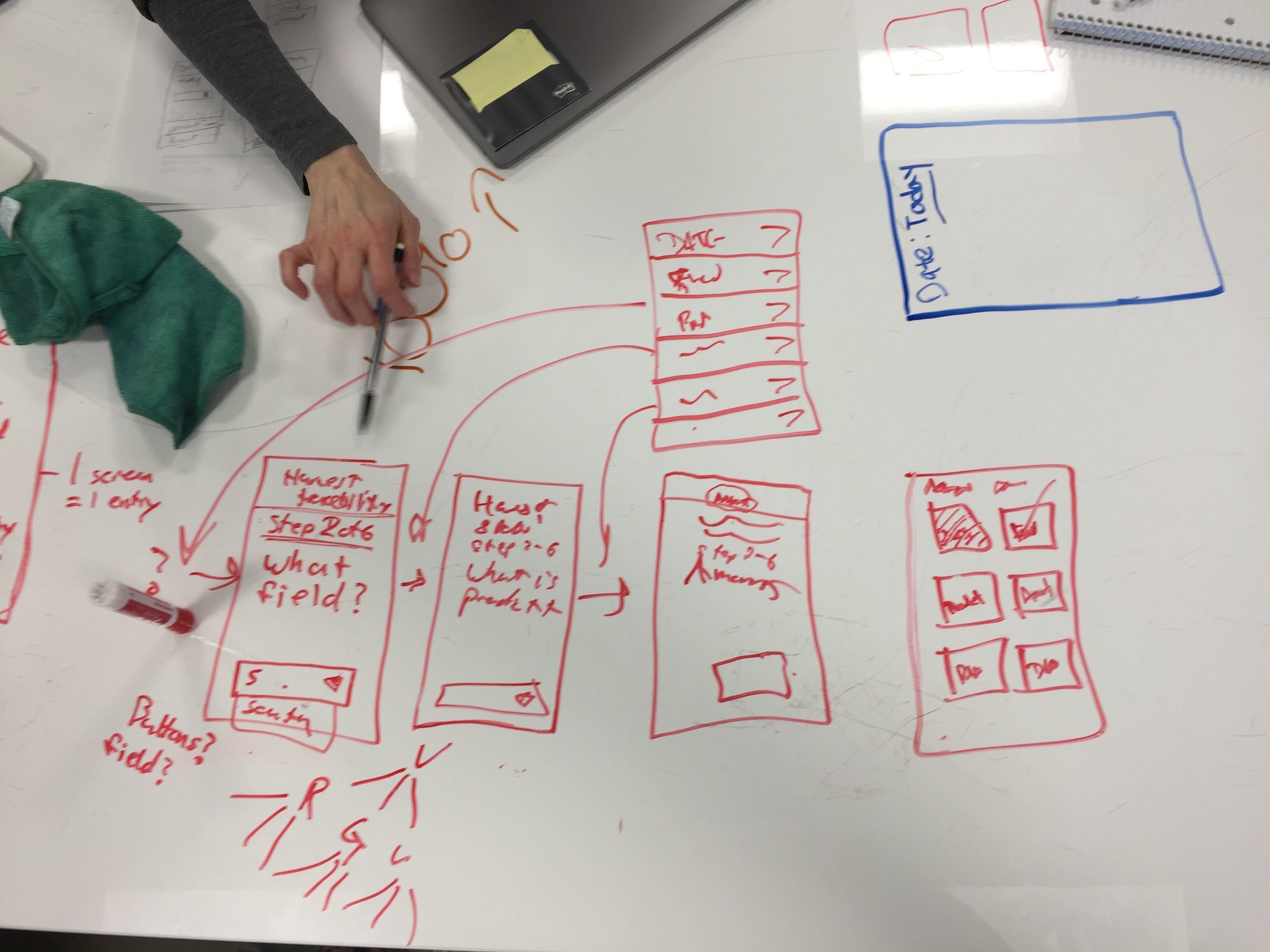Challenge
Minnesota fruit and vegetable farmers are busy when working in field and farm environments, they have many competing priorities which can make time-consuming record keeping a pain point. Dr. Cindy Tong, the primary researcher on the MDA funded-grant and professor at the University of Minnesota approached our team to improve or create a digital platform to support the processes through which medium-sized fruit and vegetable farmers in MN can remember to record, complete, and access necessary produce safety-tracking requirements with minimum effort.
Approach
Our approach was to invest deeply into understanding the problem space including the surrounding ecosystem of government regulations. As we continued to meet with farmers and understand their goals, a prototype was created and iterated upon based on user feedback. Our final iteration was presented to University of Minnesota stakeholders.
My Role
My key responsibilities included planning and executing a contextual inquiry and participatory research sessions with farmers. After research sessions I complied data into a research findings and plan document which was used to track key takeaways and develop goals for moving forward. I was also responsible for creating a persona, and creating a narrative for our presentation.
Methods
Contextual Inquiry
Feature Cards
Usability Tests
Interactive Prototype
Outcomes
University of Minnesota researches were presented with a design for a mobile application that can be moved forward with further testing and development. The produce Safely prototype utilizes automated data entry with large buttons and one touch interactions to fit within a farmer’s busy outdoor lifestyle.
Users
Who are they?
Minnesota fruit and vegetable farmers
What do they value?
Growing safe, healthy produce for their communities.
Maintaining a balanced workflow to support efficiency.
Keeping accurate food safety records for auditing purposes
Process
Understanding the Problem Space
To learn more about the problem space we took a deep dive into government regulations, conducted interactive research a trade show, and attended contextual inquiry sessions with farmers to gain a better understanding of how record keeping fits into their lives. Research methods we utilized included surveys, directed storytelling, and feature card sorts.
Compiling Findings Into Key Goals and Insights
After each research session, findings were compiled into a document that highlighted pain points and opportunity areas within the record-keeping process. Prototype goals and feature ideas were outlined to move forward with a persona and wireframes.
Key Takeaways:
Government Regulations are extensive and documentation requirements varies greatly from farm to farm depending on individual practices.
Farmers have extremely busy lifestyles that require constant energy. By the end of the day, there is little energy left for record keeping.
Records were often kept on papers which became messy and damaged in outdoor working environments.
Developing the Persona
Synthesized research findings were utilized to develop a user persona named Heather Smith. The persona was utlilized in creating empathy with stakeholders and providing a backstory and purpose to design decisions.
Collectively Brainstorming Solutions
To explore solutions, the team took to the whiteboard and drew out ideas in a group brainstorming session. This is where the structure and primary design features of the Produce Safely prototype were created.
Creating the Produce Safely Prototype
A prototype was developed with the following core goals:
Simple, and fast to use
Flexible
Promotes ownership and accountability
Fulfills GAP Audit requirements

